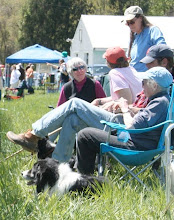 A stunning sight - bright green broad leaves of tobacco plants against the red-brown earth of Connecticut.
A stunning sight - bright green broad leaves of tobacco plants against the red-brown earth of Connecticut. A new book Connecticut Valley Vernacular: The Vanishing Landscape and Architecture of the New England Tobacco Fields by James F. O'Gorman offers a readable account of the agricultural history of tobacco in the river valley. Vintage photographs offer a view into the not-so-long-ago time when shade-grown tobacco was a way of life in the region.
The Connecticut River valley was once a major producer of cigar leaf tobacco, and tobacco is still grown in the state.
(The river actually begins near the Canadian border and travels south some 400-plus miles, wending through fertile lands on its journey south to Long Island Sound.)
The book (published by University of Pennsylvania Press) examines a vanishing way of life and the architecture the valued crop called into being. (A tobacco shed is actually a wooden mechanical device to properly dry the crop.)
 O'Gorman is a professor of history of American art at Wellesley College and author of the best-selling ABC of Architecture.
O'Gorman is a professor of history of American art at Wellesley College and author of the best-selling ABC of Architecture.







